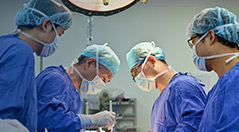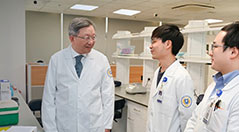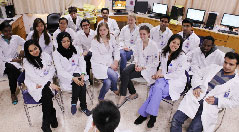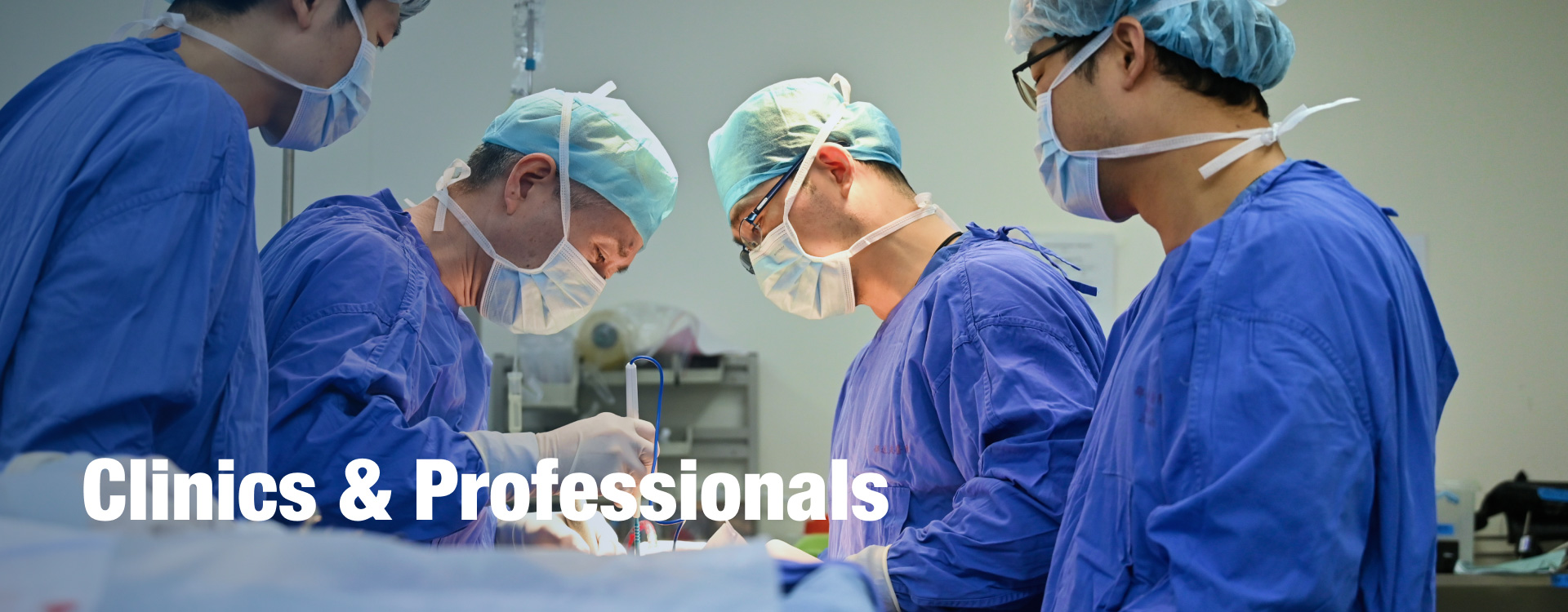General Surgery
Overview
The Department of General Surgery at SRRSH, was founded in 1994 as a pioneering example of the American healthcare model implemented in China. The department has benefited from the leadership of distinguished surgical experts, including Professor David Fong, MD; Dr. Bryner; Dr. Finley; Dr. Hoffman; and renowned Chinese surgeons such as Professors QI Ygeng, PENG Shuyou, and CAI Xiujun. From its inception, the department has upheld the highest standards, aspiring to achieve international excellence in clinical care, education, technical training, and infrastructure development.
Designated as a National Clinical Key Specialty, the department serves as a central hub for standardized surgical residency and specialist training, as well as a national center for laparoscopic technology exchange and training. It seamlessly integrates research, education, and clinical practice. Key affiliated research facilities include the National Engineering Research Center for Minimally Invasive Instrument Innovation and Application, the Zhejiang University Minimally Invasive Surgery Research Institute, and the Key Laboratory of Laparoscopic Technology in Zhejiang Province. The department also functions as a provincial center for quality control in minimally invasive techniques and a national leader in clinical research on minimally invasive treatments for abdominal and hepatic diseases.
The department's current team comprises 119 physicians, including 9 doctoral supervisors, 18 master’s supervisors, 30 professors, 26 associate professors, 42 attending physicians, and 21 residents, with nearly 70% of the team holding doctoral degrees. The department is structured into four comprehensive subspecialties: Hepatobiliary and Pancreatic Surgery, Gastrointestinal Surgery, Vascular Surgery, and Hernia and Abdominal Wall Surgery. The team structure is balanced, with a strong emphasis on specialized expertise.
Renowned for its minimally invasive surgical techniques, the department holds a leading academic position in China and exerts significant influence on the international surgical community. Its advanced diagnostic and therapeutic capabilities, including cutting-edge laparoscopic and robotic systems, have set global benchmarks in minimally invasive surgery for hepatobiliary and pancreatic cancers, such as liver, gallbladder, bile duct, and pancreatic malignancies. Nationally, the department is at the forefront of minimally invasive treatments for gastric cancer, colorectal cancer, hernias, and vascular diseases. Each year, the department manages approximately 30,000 inpatient cases and performs over 20,000 surgeries, achieving outstanding clinical outcomes.
Technical advantages
I. Hepatobiliary and Pancreatic Surgery
The Hepatobiliary and Pancreatic Surgery division at SRRSH is a national leader in the systematic application of minimally invasive surgical techniques. Among the first in China to adopt these methods, the division now routinely performs robotic and laparoscopic surgeries for hepatobiliary and pancreatic diseases, as well as liver transplants. With an annual surgical volume of nearly 10,000 cases—over 90% of which are minimally invasive—the division is committed to advancing innovation and aims to establish itself as a world-class team in precise, minimally invasive hepatobiliary and pancreatic surgery.
Under the academic leadership of Professor CAI Xiujun, a globally recognized pioneer in minimally invasive surgery, the division has introduced numerous groundbreaking techniques and practices. These include the development and implementation of laparoscopic cavitron ultrasonic surgical aspirator for anatomical liver resection and laparoscopic regional hepatic blood flow occlusion. The team completed China’s first laparoscopic left lateral hepatic lobectomy, right hepatectomy, and pancreaticoduodenectomy. It also performed the world’s first fully laparoscopic two-stage hepatectomy using the “Cai ALPPS” method and the first robotic single-port left hepatectomy. Advanced techniques such as fluorescence-guided anatomical liver segment resection and robot-assisted pancreaticoduodenectomy were introduced to China by Professor Cai. Additionally, he also led the development of China’s first guidelines for laparoscopic liver surgery and pioneering fluorescence imaging grading for laparoscopic liver tumor resections. To enhance patient outcomes, the division has established specialized groups focusing on Enhanced Recovery After Surgery (ERAS) protocols for liver surgery and Severe Acute Pancreatitis (SAP) care. It has also spearheaded the creation of the "Abdominal Infection and SAP Alliance," promoting collaboration and knowledge sharing in these critical areas.
As a National Training Base for Specialist Physicians, a Key Residency Training Base, and an accredited Training Center for Minimally Invasive Surgery by prestigious organizations such as the Asia-Pacific Liver Surgery Training Center and the Royal College of Surgeons of England (RCS), the department plays a pivotal role in advancing surgical expertise. By training numerous medical professionals annually, the department significantly contributes to the development of minimally invasive surgery both in China and the rest of the world.
II. Gastrointestinal Surgery
Aiming to become a world-class sub-specialty with professionality, standardization, and minimally invasive features, the Gastrointestinal Surgery division is the pioneer in the application of laparoscopic technologies in the diagnosis and treatment of gastric cancer, intestinal cancer and other gastrointestinal diseases in China. In 2020, the world's first stent-based diverting technique innovated independently by President CAI Xiujun replaced the 168-year-old diverting ileostomy, which has enabled patients with low rectal cancer to avoid 3-6 months of artificial anus indwelling and colostomy reversal, shortening the treatment cycle to 3 weeks, greatly reducing patient trauma and saving valuable medical resources. This technology won the Top Ten Academic Advances of Zhejiang University in 2020, and "Research and Development of Degradable Stents and the Establishment and Application of Stent-based Anastomosis of Hollow Organs" won the first prize of the Zhejiang Provincial Technological Invention Award in 2021. Currently, the Gastrointestinal Surgery Department has three major diagnosis and treatment centers including the Gastric Cancer Diagnosis and Treatment Center, the IBD Center, and the Bariatric and Metabolic Surgery Center, as well as a specialized treatment department for gastrointestinal stromal tumors.
The Gastric Cancer Diagnosis and Treatment Center has top-notch MDT teams in China, providing the most standardized and appropriate diagnosis and treatment schedules for every patient with gastric cancer. The center diagnoses and treats more than 2,000 gastric cancer patients and performs more than 800 radical gastrectomy every year with an over 90% laparoscopic coverage rate. It has now become a regional gastric cancer diagnosis and treatment center and is also a provincial technical training base and quality control center, boasting internationally advanced and domestically leading diagnosis and treatment level.
Based on the standardized procedures of guidelines and the concept of minimally invasive treatment, the center routinely performs total laparoscopic radical distal gastrectomy (including Delta-shaped anastomosis, Overlap anastomosis, Billroth II + Braun anastomosis, (Uncut) Roux-en-Y anastomosis, etc.), total laparoscopic radical total gastrectomy (Overlap anastomosis, FEEA anastomosis, reverse pi-shape anastomosis, manual anastomosis, etc.), total laparoscopic radical proximal gastrectomy (double-channel anastomosis), and pylorus-preserving radical gastrectomy for gastric cancer on the basis of strictly controlling surgical indications and quality. At the same time, robot-assisted radical gastrectomy for gastric cancer is routinely performed, and the number of robot-assisted gastric cancer surgeries ranks first within the province. These surgeries have achieved good efficacy, significantly reducing postoperative complications in the short term and improving the postoperative overall survival rate in the long term.
The IBD Center stands as a preeminent institution within China dedicated to the diagnosis and treatment of Inflammatory Bowel Disease (IBD), admits a substantial number of patients annually, both from within the province and beyond. The center conducts over 300 intestinal surgeries each year, the majority of which are executed through minimally invasive procedures. The center routinely undertakes laparoscopic surgeries for intestinal fistulas and strictures caused by Crohn's disease, as well as laparoscopic "total colectomy and pouch reconstruction" for patients with ulcerative colitis showing perfect effects. Additionally, the center has attained remarkable accomplishments in scientific research, educational endeavors, and clinical practice. It has spearheaded numerous domestic and international multi-center clinical research projects as well as fundamental research, yielding a series of notable achievements.
The Bariatric and Metabolic Surgery Center was established in early 2021, but the sub-specialty has engaged in bariatric work for more than 7 years, with a greatly high starting point and strong professional ability. As the largest bariatric and metabolic surgery center in Zhejiang Province, its patient volume ranks first in the province. The center has 4 senior professional title holders, 1 intermediate professional title holder, and a nursing team of more than 10 people. It has an independent ward with more than 20 beds and has performed surgeries for more than 1,900 patients with simple obesity and diabetes so far, with significant weight loss and hypoglycemic effects. The center can skillfully perform all bariatric and metabolic surgical procedures, including but not limited to sleeve gastrectomy, sleeve gastrectomy plus bypass and various revision surgeries. The featured technology of this center is unilateral three-mini-port laparoscopic sleeve gastrectomy, which has small incisions, fast recovery and high acceptance among patients. Currently, it has performed more than 1,300 surgeries and accumulated rich experience.
The Gastrointestinal Stromal Tumor Treatment sub-specialty has leading professional treatment teams in China, comprehensively grasping the theoretical frontiers of the diagnosis and treatment of this disease, participating in the formulation of many domestic guidelines for the diagnosis and treatment, as well as multi-center clinical studies of gastrointestinal stromal tumors, precisely controlling the whole management of clinical drug treatment and surgical treatment (especially laparoscopic surgery). It diagnoses and treats more than 1,500 patients with gastrointestinal stromal tumors every year, and the annual surgical volume exceeds 150 cases. It has a complete and detailed case database and regularly publishes articles and summarizes experience.
III. Vascular Surgery
SRRSH is one of the earliest hospitals in Zhejiang Province to start clinical, scientific research, and educational endeavors in vascular surgery. Currently, the center conducts the diagnosis and minimally invasive treatment of various common and complex diseases in vascular surgery, such as thoracic and abdominal aortic aneurysms and arterial dissections, lower extremity arteriosclerosis obliterans, carotid artery and subclavian artery stenosis, visceral artery lesions such as splenic artery, renal artery, and mesenteric artery, lower extremity varicose veins and thrombosis, etc. Among them, the annual average number of major artery surgeries exceeds 100, the number of lower extremity artery surgeries exceeds 300, and the number of venous surgeries exceeds 1,500. According to the data of the Stroke Screening and Prevention Project Committee of the Ministry of Health, the number and quality of carotid artery stenosis surgeries at SRRSH rank among the top in China, and is in a leading position in China in terms of carotid endarterectomy.
In 2019, the center took the lead among tertiary hospitals in China in establishing the "Venous Disease Diagnosis and Treatment Center" and the "Ambulatory Surgery Centers". These centers specialize in the training and teaching of minimally invasive treatments for lower extremity venous diseases, and they also shoulder the tasks of national standardized continuing education and training for doctors within Zhejiang Province and across the country. To date, the center has successfully held dozens of training courses, spreading advanced minimally invasive venous surgical techniques to all parts of the country.
In addition, the center has become proficient in endovascular interventional treatment for peripheral arteriosclerosis obliterans and the "one-stop" treatment for diabetic foot with lower extremity arterial occlusion through multidisciplinary collaboration. It also actively promotes new fenestration techniques for complex thoracic and abdominal aortic lesions and adheres to the concept of minimally invasiveness, which is at the forefront of aortic endovascular treatment in China. While improving clinical skills, the center attaches great importance to fundamental research and teaching work in the field of vascular surgery. It undertakes more than 10 research projects, including the sub-projects of National Key Technology R & D Program for the 10th Five-Year Plan period, projects funded by the National Natural Science Foundation of China, and projects supported by the Natural Science Foundation of Zhejiang Province. Moreover, it has published over 50 SCI and Chinese literature papers. Members of the center have delivered academic reports at several important international conferences, exerting certain academic influence both at home and abroad.
IV. Hernia and Abdominal Wall Surgery
The Hernia and Abdominal Wall Surgery of SRRSH is a well-known hernia surgery center in China and one of the largest professional hernia surgery centers in Zhejiang Province. It performs more than 1,500 hernia surgeries of various types, with 80% of them being minimally invasive surgeries every year. The volume of minimally invasive surgeries ranks first in Zhejiang Province. In particular, it has gained advantages in the diagnosis and treatment of difficult and complex hernias such as hiatal hernia, diaphragmatic hernia, abdominal wall hernia, and incisional hernia. The application of minimally invasive techniques and the concept of fast-track surgery are emphasized. It was the first to establish a pain-free hernia surgery center in China. Meanwhile, this center is also a training base and a technical center authorized by multiple domestic academic institutions. It serves as the leading unit of the Zhejiang Gastro-esophageal Reflux Alliance. Members of the center hold positions as committee members in multiple academic institutions, including the Chinese Medical Association. They have a certain academic influence in China, and the technical level of the center ranks among the top in Zhejiang Province and is at an advanced level in the country.
Academic status
The first National Engineering Research Center in the field of minimally invasive medicine:
National Engineering Research Center for Minimally Invasive Instrument Innovation And Application.
One of the first national key clinical specialties certified by the Ministry of Health
National key base for standardized training of surgical residents
National standardized training base for specialized surgeons
National laparoscopic technology exchange and training center
Zhejiang Province Minimally Invasive Technology Quality Control Center
Zhejiang University Minimally Invasive Surgery Research Institute
Zhejiang Key Laboratory of Laparoscopic Technology Research
Zhejiang Key Laboratory of Precise Diagnosis and Treatment of Abdominal Infection
Zhejiang Key Laboratory of Multi-omics Precision Diagnosis and Treatment of Liver Diseases
Zhejiang University Clinical Innovation Center for Minimally Invasive Technology and Instruments
Zhejiang Provincial Clinical Research Center for Minimally Invasive Diagnosis and Treatment of Abdominal Organs
Zhejiang Minimally Invasive Diagnosis and Treatment Technology Research Center of Severe Hepatobiliary Disease
Unit of the Vice Chairperson of the Surgery Branch of the Chinese Medical Association
Unit of the Chairperson of the Minimally Invasive Surgery Branch of the Chinese Medical Doctor Association Surgery Division
Unit of the Chairperson of the Surgery Branch of the Zhejiang Medical Association
Unit of the Chairperson of the Minimally Invasive Surgery Branch of the Zhejiang Medical Association
Unit of the Chairperson of the Minimally Invasive Surgery Specialty Committee of the Zhejiang Medical Doctors Association
Unit of the Chairperson of the Robotic Surgery Specialty Committee of the Zhejiang Medical Doctors Association
Research achievements
The General Surgery Department has undertaken more than 60 major national research projects, including the National 863 Program, the 12th Five-Year National Support Program, the National Key Scientific Instrument Development Project, international cooperation projects funded by the Ministry of Science and Technology, industry-specific funds from the Ministry of Health, and key projects funded by the National Natural Science Foundation.
Patents: Over 100 national patents granted, including more than 20 invention patents, two of which have been industrialized and applied in over 160 hospitals across the country.
Publications: Published over 700 academic papers, with more than 500 indexed in SCI. High-quality papers have been published in top international surgical journals like Annals of Surgery and leading journals such as CELL STEM CELL and PNAS.
Awards and Honors:
National Innovation Forefront Award (1)
Second Prize of State Technological Invention Award (1)
Second Prize of National Science and Technology Progress Award (2)
First Prize of Science and Technology Progress Award by the Ministry of Education (1)
Major Contribution Award of Zhejiang Province Science and Technology Award (1)
First Prize of Zhejiang Province Technological Invention Award (1)
First Prize of Zhejiang Province Science and Technology Progress Award (3)
Second Prize of Zhejiang Province Science and Technology Progress Award (1)
Third Prize of Zhejiang Province Science and Technology Progress Award (1)
HLHL Awards of Scientific and Technological Innovation (1)
WU JIEPING MEDICAL FOUNDATION Medical Innovation Award (1)
C.C. Tan Clinical Medicine Award (1)
14th Wu Jieping - Paul Janssen Medical & Pharmaceutical Award (1).
Experts
-
 CAI XiujunProfessor/Senior Consultant
CAI XiujunProfessor/Senior Consultant -
 PENG ShuyouProfessor/Senior Consultant
PENG ShuyouProfessor/Senior Consultant -
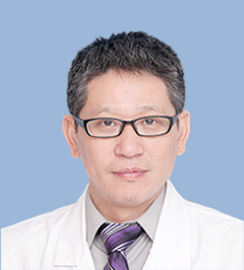 YU HongSenior Consultant
YU HongSenior Consultant -
 CAO LipingProfessor/Senior Consultant
CAO LipingProfessor/Senior Consultant -
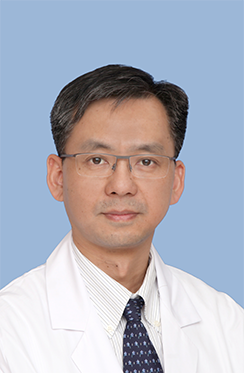 WANG GuanyuSenior Consultant
WANG GuanyuSenior Consultant -
 LIANG XiaoProfessor/Senior Consultant
LIANG XiaoProfessor/Senior Consultant -
 JIANG ZhijunSenior Consultant
JIANG ZhijunSenior Consultant -
 HONG DefeiProfessor/Senior Consultant
HONG DefeiProfessor/Senior Consultant -
 XU BinSenior Consultant
XU BinSenior Consultant -
 CAI LiuxinSenior Consultant
CAI LiuxinSenior Consultant -
 LOU SongmeiSenior Consultant
LOU SongmeiSenior Consultant -
 LIN HuiSenior Consultant
LIN HuiSenior Consultant -
 ZHENG XueyongSenior Consultant
ZHENG XueyongSenior Consultant -
 WU ZhengrongSenior Consultant
WU ZhengrongSenior Consultant -
 SHEN BoSenior Consultant
SHEN BoSenior Consultant -
 DING GuopingSenior Consultant
DING GuopingSenior Consultant -
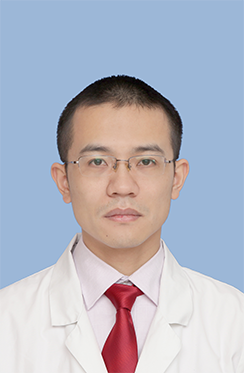 WANG YifanSenior Consultant
WANG YifanSenior Consultant -
 JIANG GuixingConsultant
JIANG GuixingConsultant -
 CHEN LinghuaConsultant
CHEN LinghuaConsultant -
 LIANG YuelongSenior Consultant
LIANG YuelongSenior Consultant -
 YU YichenConsultant
YU YichenConsultant -
 YANG JinConsultant
YANG JinConsultant -
 LI ZheyongConsultant
LI ZheyongConsultant -
 JIN Ren'anConsultant
JIN Ren'anConsultant -
 FANG YifengConsultant
FANG YifengConsultant -
 SHEN JiliangConsultant
SHEN JiliangConsultant -
 FAN GHaixingConsultant
FAN GHaixingConsultant -
 FAN GHaixingConsultant
FAN GHaixingConsultant
-
 WANG XianfaSenior Consultant
WANG XianfaSenior Consultant -
 ZHU LinghuaSenior Consultant
ZHU LinghuaSenior Consultant -
 ZHOU WeiSenior Consultant
ZHOU WeiSenior Consultant -
 LI LiboSenior Consultant
LI LiboSenior Consultant -
 WANG YongSenior Consultant
WANG YongSenior Consultant -
 CHEN DingweiSenior Consultant
CHEN DingweiSenior Consultant -
 ZHU YipingSenior Consultant
ZHU YipingSenior Consultant -
 QIAN HaoranSenior Consultant
QIAN HaoranSenior Consultant -
 LI WeiConsultant
LI WeiConsultant -
 YAN JiafeiSenior Consultant
YAN JiafeiSenior Consultant -
 DAI YiConsultant
DAI YiConsultant -
 YU WeihuaConsultant
YU WeihuaConsultant -
 YU TunanConsultant
YU TunanConsultant -
 CHEN KeConsultant
CHEN KeConsultant -
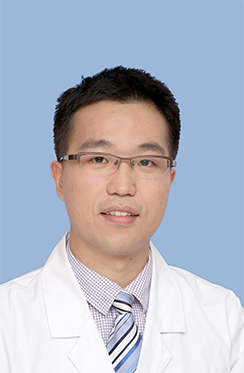 LUO PengConsultant
LUO PengConsultant -
 FENG XuConsultant
FENG XuConsultant -
 CHEN JiangConsultant
CHEN JiangConsultant -
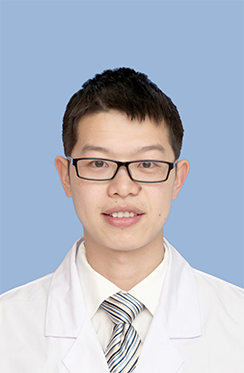 CHEN GuojunConsultant
CHEN GuojunConsultant -
 PAN JunhaiConsultant
PAN JunhaiConsultant



